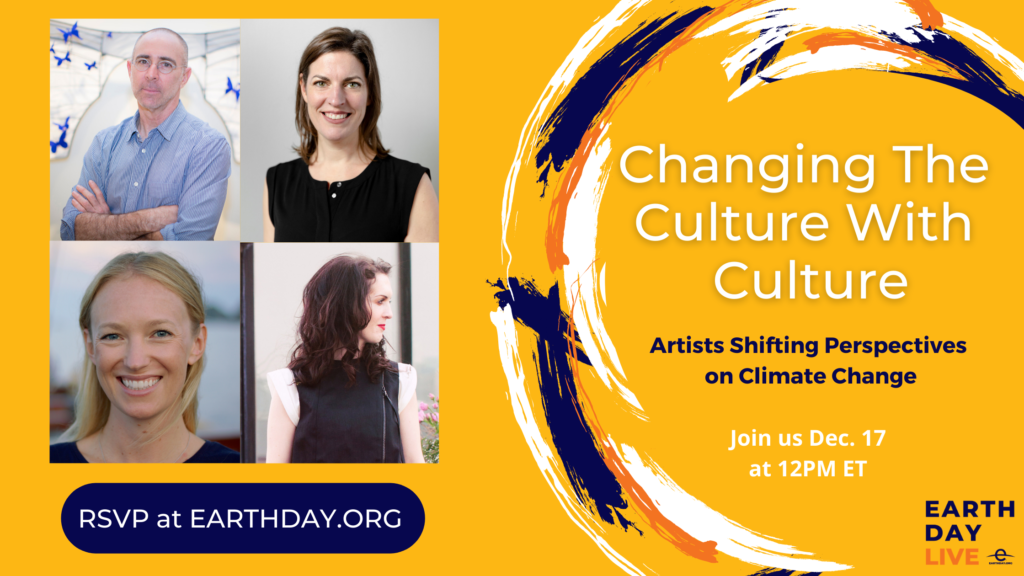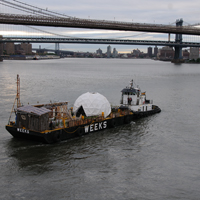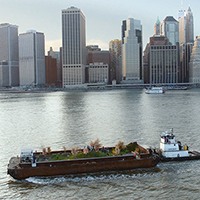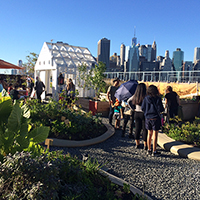Artists for the Earth
How can art help save the world?
December 15, 2020
To address climate change, we need to change culture. Art will play a significant role. Art’s influence is subjective and emotional, a complement to the objectivity of science. Art is a powerful tool that affirms cultural beliefs, values and our understanding of humanity’s relationships in societies and the natural world.
Join us this Thursday, December 17 at 12 PM ET for Changing the Culture With Culture: Artists Shifting Perspectives on Climate Change — an Earth Day Live webinar featuring artists working at the intersection of art and science. Register for free today.

Artists also create work that presents new ideas to challenge the status quo. In a recent interview with EARTHDAY.ORG™, Mary Mattingly, a photographer, public installation and performative artist and panelist in the upcoming webinar, discussed her passion for ecology and sustainability and some of the issues surrounding her works of art.
EARTHDAY.ORG: You have built three river barges over the past 14 years, including Waterpod and Swale, and docked them along the waterways of New York and Philadelphia. Visitors come to see the barges’ home grown gardens, composters and rainwater conserving methods, to mention a few aspects of your ingenious sustainable living spaces. Can you tell us, given the enormous difficulty of building these, where your inspiration came from and how you sustained optimism through the challenges of getting the projects done?
Mary Mattingly: If life is art, building and inhabiting a self-sufficient floating island would allow me to live in a way that met my ethics and economic reality in an expensive city, and also allow the space to model the move away from deep dependence on extractive, material supply chains. Building the Waterpod was a three-year process of bureaucratic navigation and compromise. Working with officials as well as hundreds of schoolchildren, Waterpod was built almost entirely from the waste chain and a barter economy. Scientists worked with engineers to build systems where food, power and water could be produced onboard. At certain points I didn’t think the project would be allowed to happen, but because I had involved so many people in the process, I had to keep moving it forward. So it built upon its own momentum. Subsequent projects [such as Swale] were much easier, because I had gained such thorough experience during the Waterpod.

EDO: You have talked about the fact that with over 30,000 acres of public land in New York City and close to 9,000,000 residents, there are only 100 acres of community garden space where people can grow or pick fresh food. Why is that and how did you overcome the regulations against allowing the public to come on board Swale and pick the free fresh food you were offering?
MM: Over the years I’ve lived in New York City, I’ve witnessed many community gardens close when the space became desirable to real estate investors. For some people, a community garden is one of the only ways to obtain safe, healthy and fresh food. Public parkland is protected, and if the work of Public Food is done in tandem with stewardship groups and the support of the Parks Department, its uses can expand. Built on a barge, Swale follows maritime law, which doesn’t have rules about where you can and can’t pick fresh foods. It has allowed us to dock at public piers adjacent to public parks and allow anyone to visit and pick fresh foods for free. It’s a pilot project and has created change in New York City. In 2017 the New York City Parks department opened their first public “foodway” at Concrete Plant Park in the Bronx.
EDO: After someone comes on board Swale and picks the fresh food, how do you think the experience will influence them in the future?
MM: I hope they think about possibilities for how they would envision the city, about the water systems that we all depend on and about the soils that the food is grown in, teeming with life. Most of all, I hope that they want to be involved in making New York City more resilient and regenerative by doing something like this on land, with a public park in their neighborhood.
EDO: Do you have hope that we can live sustainably in the future so that we can truly live in a perfect balance with nature?
MM: It’s a utopian dream in the way space travel is: it’s ambitious. Right now, people with the most means to be ambitious are reliant upon an economic system that has empowered them. I believe what Donella Meadows has said about trigger points in a system. To change a system, you need to change the purpose of a system. Artists do this through communication, through exposing current systems of desire as temporary and collectively striving for something much larger. We live in the messy space of disruptive “innovation” that identify opportunities to change the scope of what is possible. It’s frustrating yet necessary to live in that often contradictory (but still change-embracing space) if there is any hope to move toward truly regenerative cultures that replace current dominant cultures.
EARTHDAY.ORG’s Artists for the Earth campaign connects artists and art organizations around the world to inspire climate action. Sign up and donate to support this program today.


